The Japanese Covered Bridge in Hoi An is an iconic landmark, once featured on the reverse side of the 20,000 VND banknote we see every day. But have you ever wondered whether its real-life history, architecture, and beauty truly match the image printed on the note? Let’s join FVG Travel to explore and learn more about this unique heritage site.
Introduction to the Japanese Covered Bridge in Hoi An
Where is the Japanese Covered Bridge located?
The Japanese Covered Bridge in Hoi An is situated on Nguyen Thi Minh Khai Street, Minh Khai Ward, right in the heart of the Ancient Town. Spanning across a small branch of the Thu Bon River, the structure serves as a link between two major streets: Nguyen Thi Minh Khai and Tran Phu.
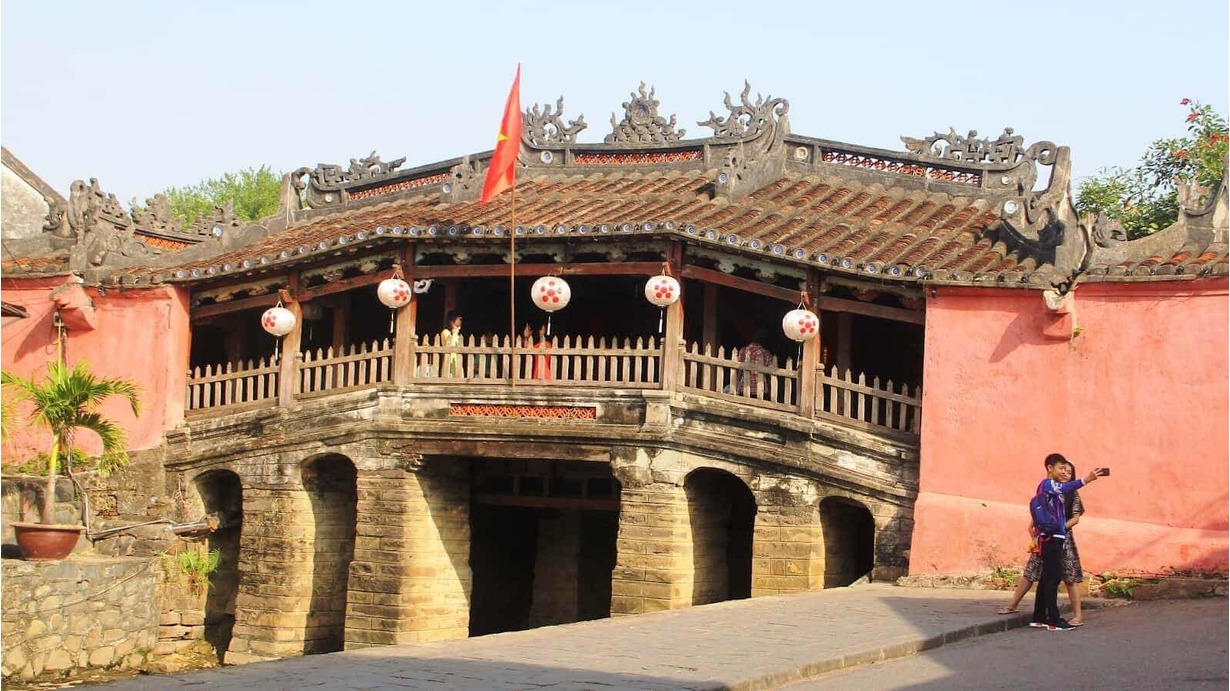
The Legend of the Japanese Covered Bridge
According to legend, the Japanese Covered Bridge was built to subdue Namazu – a giant sea monster said to live deep underground, whose tail flicks would cause earthquakes and floods. Locals believed that constructing the bridge would seal the creature away, bringing peace and prosperity to Hội An. The statues of a dog and a monkey placed at either end of the bridge not only reflect this belief but are also thought to represent the years of the Monkey and the Dog in the lunar calendar, corresponding to the period when the bridge was constructed.
Later, the pagoda section was added and connected to the northern balustrade, creating a unique structure that served as both a bridge and a temple. From then on, it became known as the Japanese Covered Bridge of Hội An. In 1719, Lord Nguyễn Phúc Chu visited and named it Lai Viễn Kiều, meaning “Bridge to Welcome Visitors from Afar.” Over the years, it underwent several restorations in 1817, 1865, 1915, and 1986 during which the original Japanese architecture was replaced with distinctive Vietnamese–Chinese styles. On February 17, 1990, the bridge was officially recognized as a National Historic and Cultural Monument.
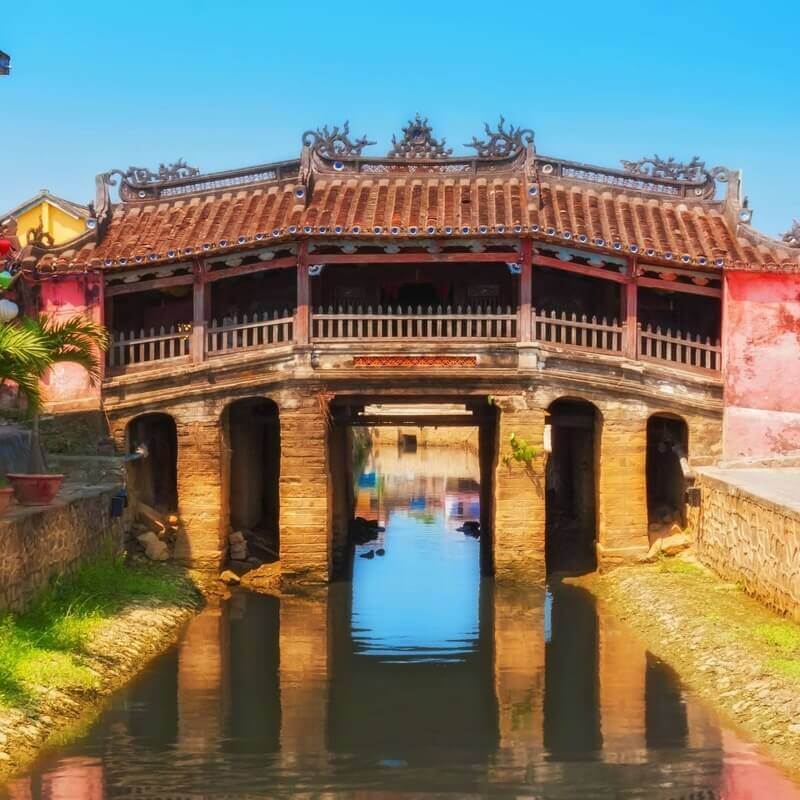
What’s Special About the Japanese Covered Bridge in Hoi An?
The Bridge Pagoda Does Not Worship Buddha
The space inside Hoi An’s Japanese Covered Bridge is quite small, which often surprises first-time visitors when they learn that no Buddha is worshipped here. The pagoda is located on one side of the bridge, featuring a Chinese-style entrance with intricate carvings. Inside, at the center, stands a wooden statue of Bắc Đế Trấn Võ (the God of Weather). This deity is revered as a symbol of peace and safety for the local community.

Japanese-Style Architecture of the Covered Bridge
The Covered Bridge in Hoi An is about 18 meters long, built entirely of wood with the upper part functioning as a temple and the lower part as a bridge spanning a small branch of the Thu Bon River, creating a serene and ancient beauty. Its foundation is supported by solid stone pillars, ensuring the structure’s durability over time.

The architecture of the Japanese Covered Bridge bears a strong Japanese influence, reflected in its gracefully curved roof and the large wooden plaque above the main entrance inscribed with the three Chinese characters “Lai Viễn Kiều.” Inside, the space is uniquely divided into the temple area and the bridge section by wooden partitions and traditional sliding doors, creating a rare and distinctive design.
Another striking feature of the bridge in Hoi An is the pair of guardian statues a dog and a monkey positioned at either end. They symbolize protection and also mark the historical period during which the structure was built.
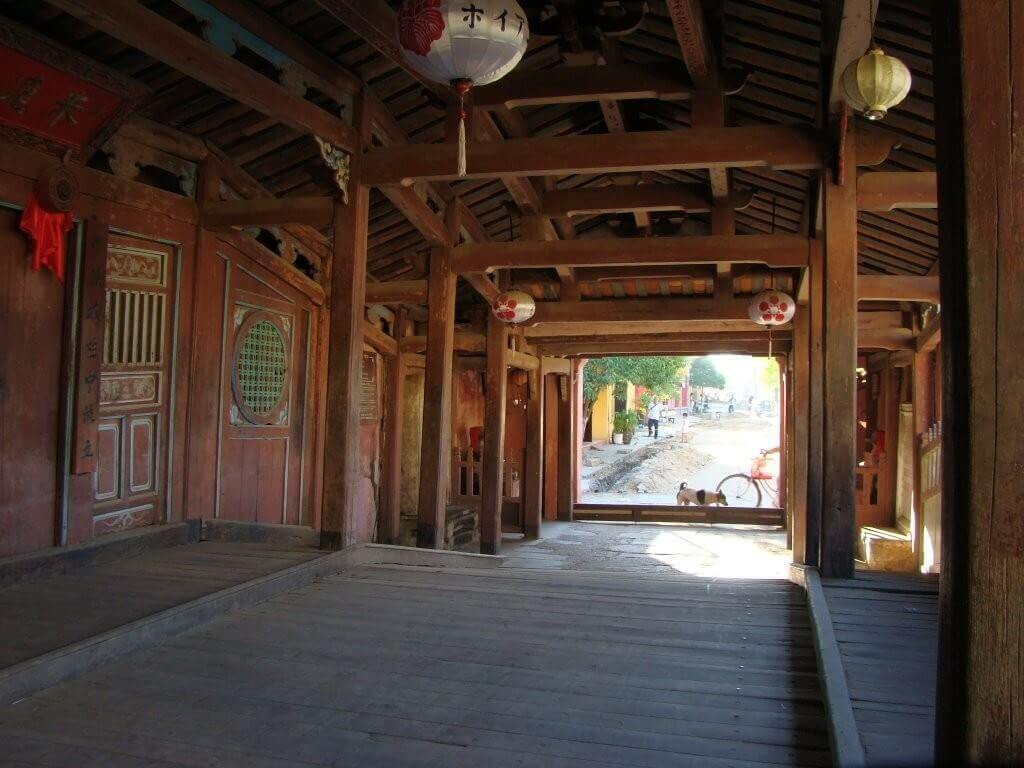
A Harmonious Blend of Chinese Architecture
Inside the Japanese Covered Bridge in Hoi An, the influence of Chinese architectural style is evident in every decorative detail. The wooden columns, painted in vermilion and gilded with gold, are intricately carved with feng shui symbols such as dragons, unicorns, turtles, and phoenixes.
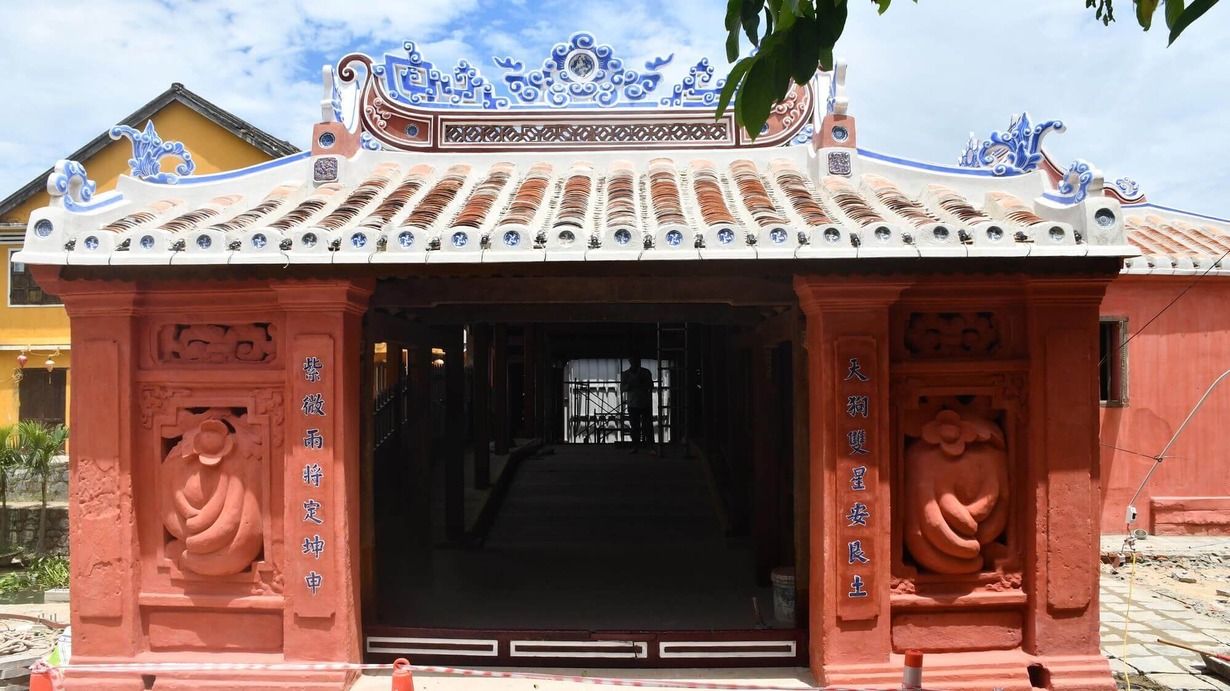
On the railings and wooden pillars, Chinese couplets carved in exquisite calligraphy not only hold artistic value but also convey profound messages about peace and faith. They stand as a testament to the deep imprint left by the Chinese merchant community, who played a significant role in building and preserving Hoi An as a thriving trading port throughout history.
The Japanese Covered Bridge – An Icon of Hoi An
The Japanese Covered Bridge in Hoi An is an architectural work of great historical and cultural significance, not only to the people of Quang Nam but also to Vietnam as a whole. The clearest proof of its importance is the depiction of the bridge on the 20,000 VND polymer banknote.
When visiting Hoi An, besides exploring the Japanese Covered Bridge, don’t miss the 12 major annual festivals held here. Each festival has its own unique charm, offering visitors unforgettable experiences of the culture and people of the ancient town.
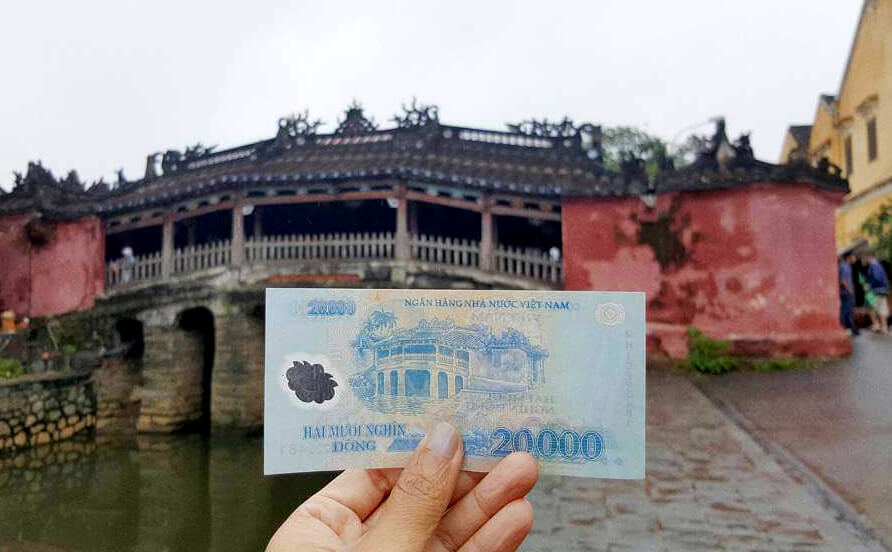
How to Get to the Japanese Covered Bridge in Hoi An
The Japanese Covered Bridge is located right in the heart of Hoi An Ancient Town, so the only way to reach it is on foot. First, you’ll need to get to the Ancient Town, park your vehicle at one of the parking lots outside, then take a leisurely stroll to admire the bridge and its charming surroundings.
If you’re unsure how to travel to Hoi An and then make your way to the Japanese Covered Bridge, here are some common options:
- Motorbike: From Da Nang, follow the Võ Nguyên Giáp – Trường Sa – Lạc Long Quân route. When you reach Hai Bà Trưng Street, turn right, continue until Nguyễn Công Trứ Street, then turn left. After that, turn right onto Lý Trường Tộ Street and ride to the end. You’ll arrive at the Ancient Town, where you can park near the museum.
- Bus: This is the most budget-friendly option, with fares around 30,000 VND per trip for the Da Nang – Hoi An route (or vice versa). The bus stops near the center, and from there, it’s just a short walk to the Japanese Covered Bridge.
- Taxi: Ideal for groups or those seeking a quick, hassle-free trip. Taxi fares from Da Nang to Hoi An range from 350,000 – 430,000 VND one way, or 750,000 – 950,000 VND for a round trip.
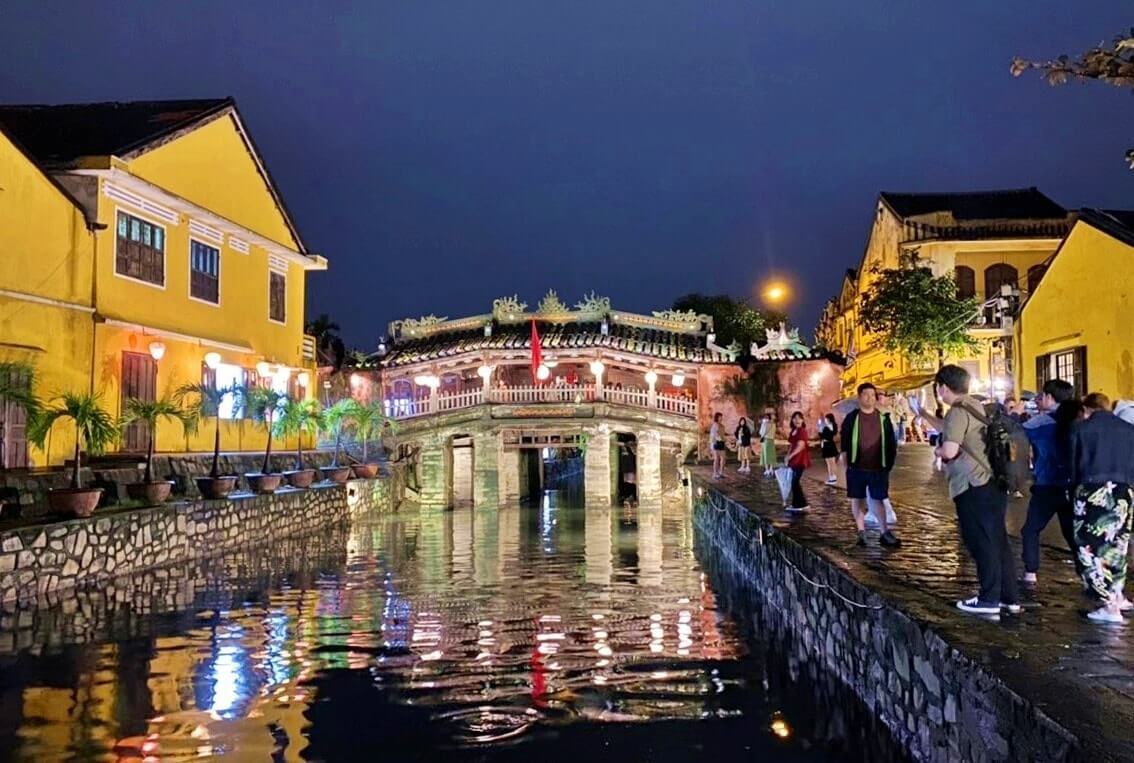
Hotels Near the Japanese Covered Bridge in Hoi An
Fivitel Hoi An
- Address: 207 Au Co Street, Cua Dai, Hoi An, Quang Nam
- Fanpage: Fivitel Hoi An Hotel
Fivitel Hoi An is one of the hotels located close to Hoi An Ancient Town. Situated about 7 km from the town center, it takes only a few minutes to reach the Japanese Covered Bridge, making it easy for guests to visit popular tourist attractions.
Beyond its convenient location, Fivitel Hoi An impresses visitors with its modern resort-style space, luxurious rooms, and stunning infinity pool. Guests can enjoy a full range of high-end facilities including a restaurant, bar, gym, spa, and private parking.
From Fivitel Hoi An, you can not only conveniently visit the Japanese Covered Bridge but also explore numerous beautiful check-in spots throughout Hoi An.
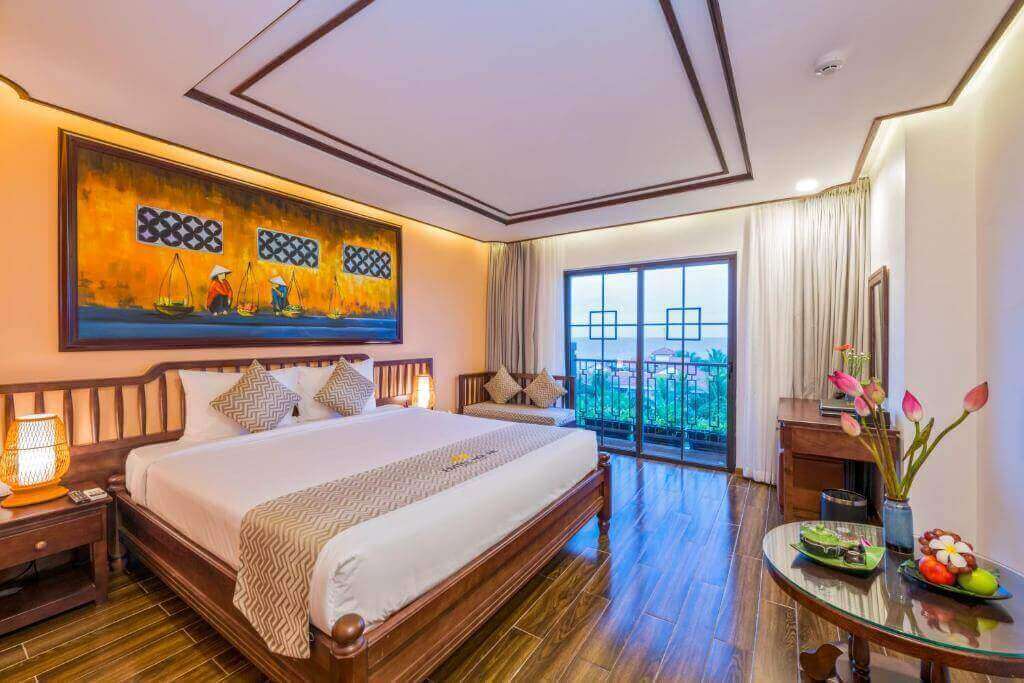
Fivitel Nam Hoi An
- Address: 02 Truong Giang 2, Duy Nghia, Duy Xuyen, Quang Nam
- Fanpage: Fivitel Nam Hoi An
Fivitel Nam Hoi An is an ideal accommodation choice for your journey to explore the ancient town and nearby attractions. Located on Truong Giang 2 Street, Duy Nghia Commune, Duy Xuyen District, Quang Nam, the hotel offers a modern resort space with various amenities such as a swimming pool, gym, and relaxing massage services. From here, it’s only about 11 km to the Japanese Covered Bridge and 8.8 km to the Chaozhou Chinese Assembly Hall.
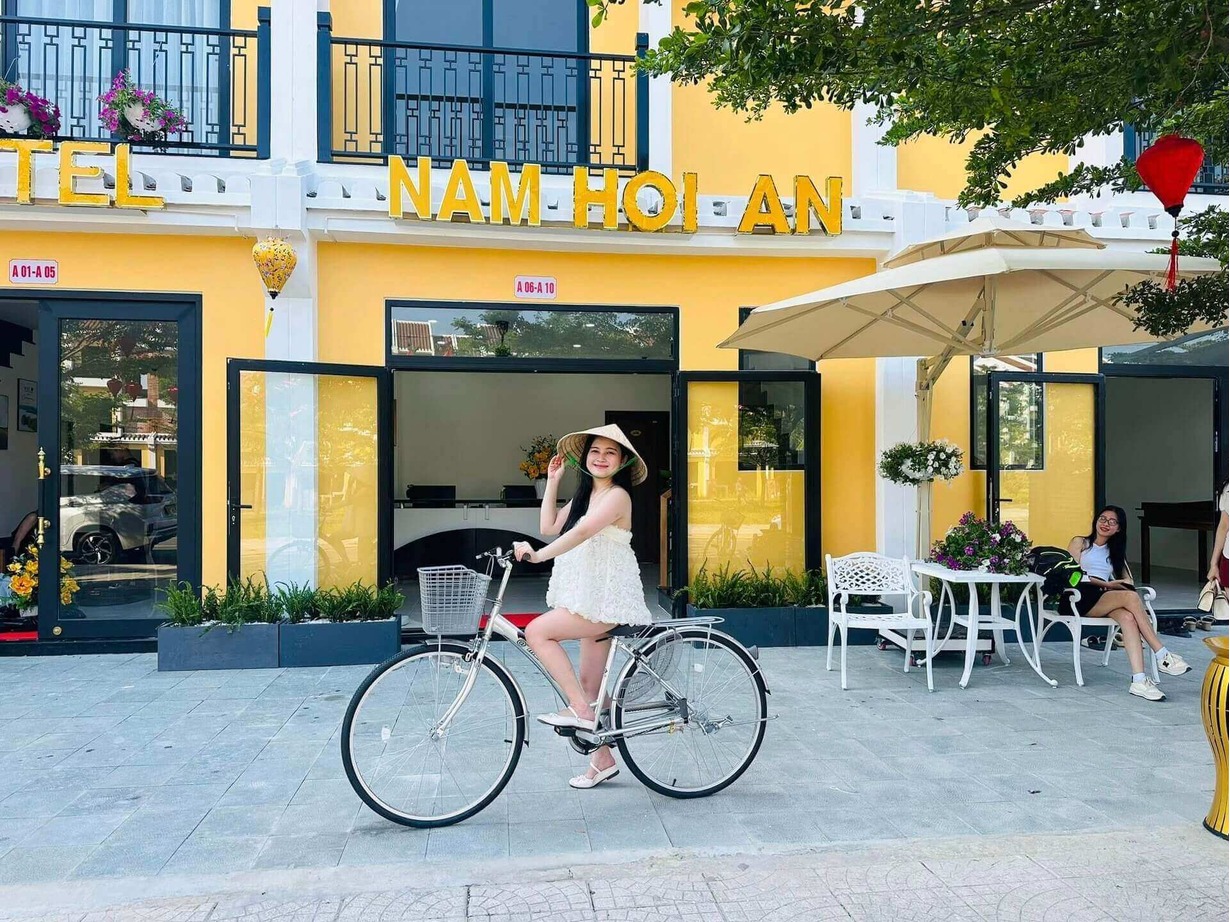
Important Notes When Visiting the Japanese Covered Bridge in Hoi An
To make your visit to the Japanese Covered Bridge in Hoi An smooth and memorable, keep the following points in mind:
- Visitors are required to purchase an entrance ticket. The current price is 80,000 VND per person for Vietnamese visitors and 150,000 VND per person for international visitors. This ticket grants access to 21 attractions in the Ancient Town, including the Japanese Covered Bridge.
- In addition to admiring the bridge’s architecture, you can enjoy traditional folk games and street performances held daily from 7:00 PM to 8:30 PM.
- For deeper insights into its history and architecture, consider hiring a tour guide to share fascinating stories about this heritage site.
- The best times to visit are around 9:00 AM or between 2:00 PM and 3:00 PM to avoid large crowds.
- As this is a spiritual site, maintain a respectful demeanor: walk gently, speak softly, avoid pushing, and keep the area peaceful.
The Japanese Covered Bridge is a historic and cultural landmark that every visitor should see when in Hoi An Ancient Town. Considered a symbol of Hoi An, it vividly reflects the spiritual life and beliefs of the local people throughout the centuries.








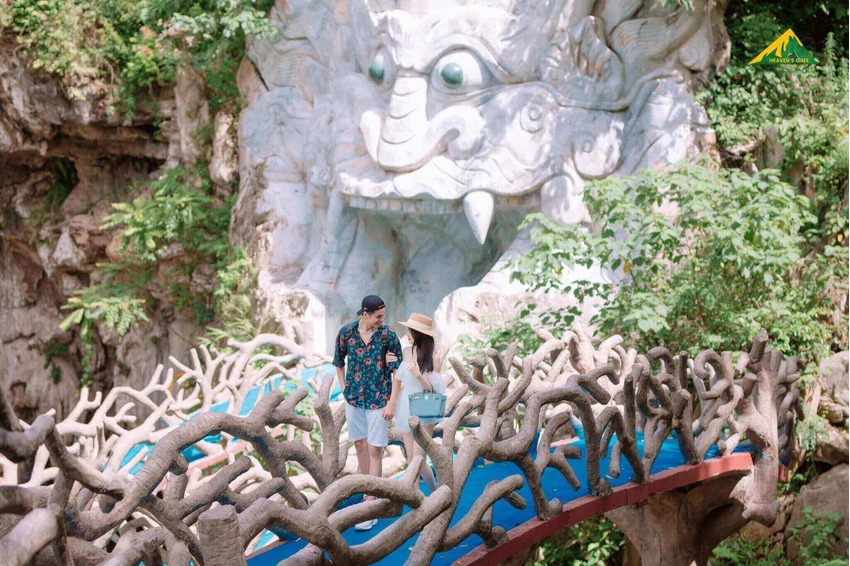





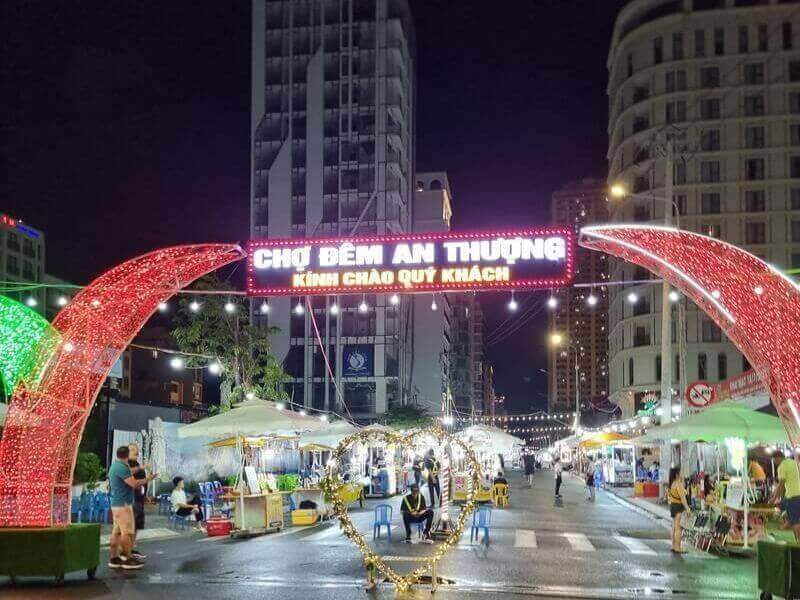


 Loading ...
Loading ...